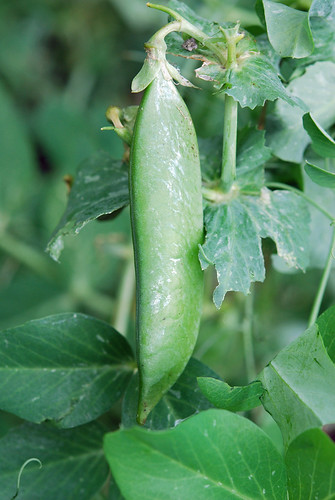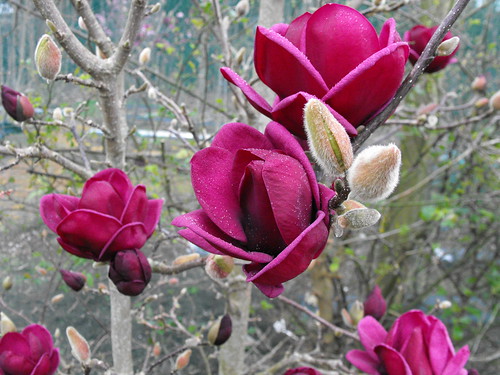Wildlife in Focus
with ecologist sue StevensHeard and not seen is probably the best way to describe this bird.
These birds get their common name probably from their favourite food. Eating almost exclusively on the sweet, waxy, crunchy shell secreted by tiny, psyllid insects, known as "bell lerps" or "lerp psyllids".
Let’s find out more about these mystery birds….

As Sue mentioned, the bell lerps are tiny insects that feed on sap that they suck from eucalyptus leaves and surround themselves with dome-shaped secretions that are designed to protect their soft bodies from predators and from the environment.
Except Bell miners or Bell birds love them.
Let me know of you have Bell Miners visiting your garden, or send in a photo to realworldgardener@gmail.com or by post to 2RRR P.O. Box 644 Gladesville NSW 1675,
or post them on Real World Gardeners facebook page, and I’ll post a CD in return.
Vegetable Heroes:Peas
-
I eats my peas with honey, I’ve done so all me life, it makes my peas taste funny, but it keeps them on me knife.
- Ever heard that one? Yes, my father used to say that everytime we harvested peas from our garden.
- Peapods are botanically a fruit, since they contain seeds developed from the ovary of a (pea) flower.
- But as always, cooks don’t stick to Science and peas are considered to be a vegetable in cooking.
- Peas or Pisum sativum, belong to the Fabaceae family, which means they fix Nitrogen from the air into their roots.
- And you thought you knew everything there was to know about peas?
- We all know what Peas look like-those green spheres in side green pods around 1o-cm long.
- Did you know that Peas have been found in ancient ruins dated at 8000 years old in the Middle East and in Turkey?
- In these ancient times dried peas were an essential part of the diet because they could be stored for long periods and provided protein during the famine months of winter. No fridges then, remember!
- Both dwarf and field peas were part of the cargo of the First Fleet to Australia in 1788 and, on arrival at Sydney Cove, each convict and marine was given a weekly ration of three pints of ‘pease’.
- By 1802 Peas were growing in Port Jackson and in Parramatta gardens.
-

- The best time to sow Peas, if you are living on the East Coast is from April until September;
- From April until August in arid climates, from April and until July in sub-tropical districts and for cool zones, late winter until October. On the Tablelands they should be sown after the last frosts.
- Peas are best planted at soil temperatures between 8°C and 24°C.
- Sow the seeds directly into the soil 15mm to 20mm deep (1'' or knuckle deep) and 75mm to 100mm apart (3'' to 4''). Water in well and don't let them dry out.
- I like to soak my Pea seeds over night. This helps achieve a better strike
- Some gardeners prefer to sow their seeds into tubs/punnets so they can keep a closer eye on them especially if there is a possible of a frost, once they have their second crop of leaves and no more frost, they can be transplanted out in the garden.
- Peas don’t seem to grow well near Onions, Chives, Garlic.
- Peas don’t like a lot of mulch or manure especially up against the stalk/stem, or being over-watered as they tend to rot off at the base of the stem.
- Don’t overfeed young plants or they’ll grow lanky and you won’t get too many pea pods.
- Wait until they’ve started flowering and then give them a good feed of liquid fertilizer at least once a fortnight.
- I prefer to feed my plants with liquid fertilisers in winter because in the cold weather, plants can use liquid fertilisers, easier and faster than the granular type.
- TIP:Water your Peas in the mornings to avoid mildew.
- Don’t overhead water late in the afternoon. If you do have mildew, try spraying with a MILK spray mixed with a couple of drops of detergent.
- With dwarf Peas you will have one main crop, with a second lighter crop and some pickings in between for the pot.
- Peas freeze well and, providing they are processed immediately after picking, lose no more of their nutritional value than in just cooking them.
- A good idea is to place a bottomless container around the young seedlings to stop the cut worm, or in my case the dragon lizard, from cutting/biting the tops off the new shoots; this will also give the new plants some protection from the wind.
- Dwarf Peas only grow about 300mm to 600mm high (12'' to 24'') but they will require some support. You can use pretty much anything from wire/mesh, string and bamboo.
- Climbing Peas grow to about 2m and crop for quite a long time.
- If you pick them regularly, your pea plants will grow like mad and you’ll get a bigger crop.
- They will need a good heavy-trellis or stakes. The position of the trellis should be facing towards the midday sun, (towards the North).
- After the Peas have stopped producing the trellis can also be used for growing cucumbers, pumpkins or tomatoes.
- Before you start ripping the pea vines off the trellis cut the stems off at ground level; leave the roots in the ground as pea roots produce nitrogen nodules. They will break down and give your next seedlings a good kick start.
- Why are they good for you?
- Being low in calories, green peas are good for those who are trying to lose weight.
- Green peas are rich in dietary fibre, may potentially lower cholesterol.
- Peas have a high amount of iron and vitamin C.
- The lutein present in green peas helps reduce the risk of age-related macular degeneration and cataracts.
- Green peas have a low GI.
- Green peas also have folic acid and vitamin B6.
Design Elements
with Landscape Designer, Louise McDaidHave you got a garden that’s got a boggy bit in it? You know, it gets waterlogged if you get a few days of heavy rain.
Maybe the water is running off your driveway, deck or patio, or maybe from downpipes.Even from the overflow of your rainwater tank.
Plants you’ve put there don’t seem to grow. You’ve tried ag line but nothing doing.
Let’s find out how to garden in a waterlogged garden?
Podcast Powered By Podbean
Raingardens that Louise mentioned are now an initiative by various state water boards. In fact you can get lots of information and instruction sheets by going to your state waterboard’s site.
http://raingardens.melbournewater.com.au/
Melbourne water has lots of information you can download not just on raingardens, but on building those swales that Louise talked about as well.
It may take a bit of time and effort to do that. In the meantime grow your plants in pots, troughs, in fact any old thing. When an area is ready for planting you’ve got yourself an instant garden when you plant out your potted plants.
Plant of the Week:Magnolia "Genie"
What do you think of when you see large tulip shaped Magnolia buds?Are you smitten by the Magnolia flowers that have those deep red colour tones? In the past we’ve had varieties like Magnolia soulangeana, M, Vulcan, Elizabeth but this one took 15 years to perfect, and once you hear about the colour, you’ll probably want one for your collection.

Magnolia soulangeana Genie, a
smaller growing Mangolia than all the ones mentioned, to 4m x 2m. Suits pots
and tubs.
Flowers in late winter to early spring with spot flowering in Autumn.
What you’ve been waiting for, what colour are the flowers?Magnolia Genie has really really dark tulip like deep burgundy flowers that are according to the breeder, frost resistant. And it flowers twice, first in late winter early spring and again in late summer/autumn.
Magnolias are slow to medium growing and can be used in small areas as they have a non-invasive root system.
Because they keep an attractive shape all year round, they look good even when not in flower.
Plant them as a focal point in the garden for you to enjoy for many years to come.
If you're lucky enough to have a rich soil for growing Magnolias, then you'll have fantastic results.
Otherwise add lots and lots compost and mulch with a 3-4 cm layer of well composted cow manure.
If your soil is heavy clay, mound it up to improve drainage and in sandy
areas leave a depression to collect the water. Protect the young plants from frosts, and from pests such as snails and slugs and the occasional possum who seem to love the buds.
Water young plants well every 7-10 days in periods of hot and dry weather, and prune lightly if branches become straggly and untidy if you really have to. Best left unpruned.
Otherwise, Magnolias are relatively maintenance free, especially once
established.
One unusual thing that the breeders would like you to know about Magnolias, and that is that they often don’t
flower true to colour for their first year or two, so if your new deep purple
variety has suddenly thrown a mass of pale pink blooms in its first season,
don’t despair!
What’s your favourite Magnolia
flower? Write in and let us know. We’d love to see a photo.

Good day! I could have sworn I've been to this website before but after going through
ReplyDeletemany of the posts I realized it's new to me. Anyhow,
I'm definitely delighted I stumbled upon it and I'll be
book-marking it and checking back regularly!
Here is my web blog Ultra Garcinia Cambogia